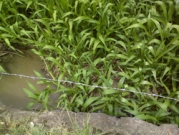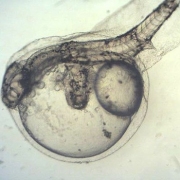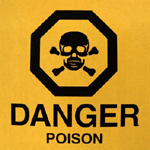
Logan and Albert Conservation Association

 A new survey of 265 housing markets around the world finds Australia has three of the five most unaffordable ones. This includes Sydney at position five, Sunshine Coast and Gold Coast in South East Queensland. Australia's housing price bubble is almost the only one in the world that has not yet burst.
A new survey of 265 housing markets around the world finds Australia has three of the five most unaffordable ones. This includes Sydney at position five, Sunshine Coast and Gold Coast in South East Queensland. Australia's housing price bubble is almost the only one in the world that has not yet burst.
The Demographia International Housing Affordability Survey http://www.demographia.com/dhi.pdf looked at markets in Australia, Canada, Ireland, New Zealand, the United Kingdom and the United States. It compared median house prices with median household incomes to arrive at a ``median multiple''. An affordable multiple is 3. Sydney came up with a whopping 8.3.
Tanberg's cartoon gives one perspective. The topic is the subject of Sydney Morning Herald blog which states that Australia's housing price bubble is almost the only one in the world that has not yet burst. Read it here. Of course this is a complex issue and one on which we will all have our own opinion. Many comments have been written here. Personally I agree with Termite's view
Firstly, in this arid continent, which only has about 7% arable land, we should quarantine good farming sites from housing development. To build on our best and most accessible farmland is short-sighted. We are doing it all over the country.
ABC news disagrees with findings of the survey. Read Housing affordability not as bad as survey claims: analyst which claim is challenged by some in the comments. To me, Dr Shlomo Angel's report seems to be advocating conservative enthusiastic support for urban sprawl.
Housing for humans without destroying habitat for other species is a challenge all Australians face now. As is having enough food to feed us all.
In South East Queensland, the government identified 42 greenfield areas. These areas are distributed equitably across the region, amongst local governments and developers. The areas do not have specific boundaries or addresses. Rather, they are general localities or ‘nodes' where development could occur. As more detailed planning occurs, the boundaries will be refined. The areas are supposed to encroach into the inter-urban breaks of the South East Queensland Regional Plan.
The Department of Infrastructure and Planning DIP has an extensive complex website. Information about greenfield sites begins here and here. The locations are illustrated in the Delivering the Queensland Housing Affordability Strategy - Greenfield land supply in South East Queensland action plan.
Draft regional plan 2009-2031 chapters can be downloaded from here.
The draft South East Queensland (SEQ) Regional Plan and the draft state planning regulatory provisions are open for submissions from December 2008 to 3 April 2009.
For details on how to have your say see detailed advice here.
 Hymenachne, one of Australia's top 20 weeds of concern, was found at Logan Village by Council staff January 2009 and later confirmed by the Queensland Herbarium. Logan City Council's pest management officers located and made the first recorded sighting of the infestation in South East Queensland.
Hymenachne, one of Australia's top 20 weeds of concern, was found at Logan Village by Council staff January 2009 and later confirmed by the Queensland Herbarium. Logan City Council's pest management officers located and made the first recorded sighting of the infestation in South East Queensland.
Like many of our weed species now, hymenachne was introduced to Australia from South America to provide ponded pasture for cattle. It has become an unwanted pest of stream banks, wetlands and irrigation ditches in coastal areas of central and north Queensland - and now at Logan Village is close to the Logan River. It is a declared a Class 2 species under Queensland's Land Protection (Pest and Stock Route Management) Act 2002 meaning it has already spread over substantial areas of Queensland, but its impact is so serious, we need to try to control it to avoid further spread onto properties still free from it.
Hymenachne grows from seed and from broken stem fragments. A single flower stalk can produce more than 4,000 seeds. Read more on biosecurity website at this page.
More information from Logan about plants to avoid is available here - before hymenachne was included
 Maclura cochinchinensis or Cockspur thorn is a favoured nesting habitat for many small bird species within and arouund Bilarabyn Reserve. The features that challenge humans and cats provide protection and shelter for small birds. Cockspur is a native Australian plant and one of the Veresdale dry vine scrub species. It is a rampant scrambler, coarse with plenty of sharp thorns, found in dry and subtropical rainforests and along scrubby watercourses. It has yellow flowers, at base of leaves in summer, the fruit is orange, globular fleshy and edible. The fruit is popular with various birds and reptiles. From seed, it germinates easily and reliably within a few weeks. It can be used carefully as a barrier plant and as nesting habitat for small birds in the bush garden.
Maclura cochinchinensis or Cockspur thorn is a favoured nesting habitat for many small bird species within and arouund Bilarabyn Reserve. The features that challenge humans and cats provide protection and shelter for small birds. Cockspur is a native Australian plant and one of the Veresdale dry vine scrub species. It is a rampant scrambler, coarse with plenty of sharp thorns, found in dry and subtropical rainforests and along scrubby watercourses. It has yellow flowers, at base of leaves in summer, the fruit is orange, globular fleshy and edible. The fruit is popular with various birds and reptiles. From seed, it germinates easily and reliably within a few weeks. It can be used carefully as a barrier plant and as nesting habitat for small birds in the bush garden.
This article is a work in progress. If any reader wishes to contribute please contact us.
 Farm spray from an adjacent macadamia farm is a suspect in deformed and diseased lavae at a Noosa fish hatchery. Evidence has now also emerged of a possible cancer cluster next to the Queensland hatchery where bizarre double-headed fish embryos have been discovered. There are worries regarding use of pesticides - all of which are registered and recommended for use on macadamia farms and worries about the water contaminations from these toxic chemicals. Could these be related to each other? This is reported in The Australian 21 January 2009.
Farm spray from an adjacent macadamia farm is a suspect in deformed and diseased lavae at a Noosa fish hatchery. Evidence has now also emerged of a possible cancer cluster next to the Queensland hatchery where bizarre double-headed fish embryos have been discovered. There are worries regarding use of pesticides - all of which are registered and recommended for use on macadamia farms and worries about the water contaminations from these toxic chemicals. Could these be related to each other? This is reported in The Australian 21 January 2009.
A 'must watch' documentary provides visual evidence of the situation. See it here on YouTube.
 Endosulfan is one chemical currently under investigation by the Queensland Department of Primary Industries and Fisheries as a possible cause of the hatching of a multitude of two-headed and chronically deformed fish at a hatchery next to a macadamia farm on the Sunshine Coast in Qld. The fungicide carbendazim is also being assessed.
Endosulfan is one chemical currently under investigation by the Queensland Department of Primary Industries and Fisheries as a possible cause of the hatching of a multitude of two-headed and chronically deformed fish at a hatchery next to a macadamia farm on the Sunshine Coast in Qld. The fungicide carbendazim is also being assessed.
Sunland Fish Hatchery owner, Gwen Gilson, says she believes contaminated water from chemical spray drift from the macadamia plantation is to blame.
Australia will continue to allow the use of this highly toxic insecticide, despite a ban placed on its application in
A groundbreaking review of 10 years' worth of adverse-reaction reports filed with American Environmental Protection Agency by pesticide manufacturers, which found that pyrethrins and pyrethroids - used in thousands of supposedly "safer" pesticides - accounted for more than 26 percent of all fatal, "major," and "moderate" human incidents reported to the EPA in 2007. Based on information from the previously unreleased EPA pesticide incident-reporting system, this investigation spurred the director of the EPA's Office of Pesticide Programs to announce the agency would begin a broad study of the human health effects of pyrethrins and pyrethroids.
Pyrethrins, extracted from the chrysanthemum plant, and their synthetic relatives, pyrethroids, have exploded in popularity over the last decade. They are now used in thousands of consumer products. These chemicals are found in bug-repellant clothing, flea collars, automatic misting devices, lawn-care products, and carpet sprays. ‘Safe' Pesticides Now First in Poisonings will rekindle the debate about the safety of modern pesticide use.
The Center for Public Integrity is dedicated to producing original, responsible investigative journalism on issues of public concern in the USA and around the world. The Center's International Consortium of Investigative Journalists (ICIJ) is a collaboration of some of the world's leading investigative reporters. ICIJ extends globally the Center's style of watchdog journalism, working with 100 reporters in 50 countries to produce long-term, transnational projects.
Will our own and global governments increase regulations and ban all those chemicals where adverse reactions occur? What risks of exposure are acceptable? How safe is it to hug your dog wearing flea collars or after being rinsed with insecticde? Some thoughts here.
Fluoridation of our drinking water is a contentious issue around the world and in now Queenslanders are faced with this dilemna. Unfortunately residents were not consulted on this recent decision. Although many people may be quite happy to drink fluoridated water others are not as they have genuine concerns about the potential health risks imposed by water fluoridation.
Australia's National Toxics Network reports that a new position paper from the US National Kidney Foundation concludes that individuals with chronic kidney disease should be notified of the potential risk from exposure to fluorides. The document acknowledges gaping holes in research concerning kidney impacts from fluorides, and thus further undermines the myth that fluoridation has been proven safe for everyone. In addition to advising that kidney patients be notified of their vulnerability to fluoride, the Kidney Foundation officially withdrew from the American Dental Association's list of organizations which support fluoridation.
To read more about this development, and to watch a FAN video discussing the issue visit Fluoride Action Network. Daniel Stockin is a career public health professional now at The Lillie Center, Inc, a Georgia-based public health training firm that is working to end water fluoridation. Email: stockin2[at]yahoo.com
 Anthony Mitrow reporter from the Jimboomba Times continues to follow local koala's story of survival in paper dated 21 January 2009. The koala's future survival depends on all of us. Unless Babe's habitat is surveyed and mapped for inclusion in the 2009 SEQ Regional Plan it will have no protection. REPORT YOUR SIGHTINGS and help make this happen.
Anthony Mitrow reporter from the Jimboomba Times continues to follow local koala's story of survival in paper dated 21 January 2009. The koala's future survival depends on all of us. Unless Babe's habitat is surveyed and mapped for inclusion in the 2009 SEQ Regional Plan it will have no protection. REPORT YOUR SIGHTINGS and help make this happen.
BABE the koala has been hit by a car, chased by dogs and suffered a urinary tract infection, but the little survivor has now been released back into his natural habitat in Jimboomba after months of rehabilitation.
The young animal has spent the last four and a half months at Australia Zoo where it underwent treatment for a range of injuries.
Babe first came to the attention of Jimboomba resident John King-Bayliss when he found the animal on Marks Road, Jimboomba. Mr King-Bayliss chased the dogs away and contacted Logan City Council who searched the area for the dogs which were not found, before confirming the koala was safe.
Later that evening Mr King-Bayliss found Babe injured on the side of the road.
"It had been hit by a car. It had blood coming from his mouth and he couldn't use one of his arms." Mr King-Bayliss said.he made calls to animal wildlife organizations but was unable to get help until he was given the number for Waterford-based wildlife carer Mark Alexander from Wildlife Answers .
INQUIRY INTO SMART GROWTH AND TRANSIT ORIENTED DEVELOPMENT TO REDUCE CAR DEPENDENCY IN SEQ was announced on 21 November 2008. Submissions closd 16 January 2009.
![]() The Travelsafe Committee of the 52nd Parliament is inquiring into Smart Growth and Transit Oriented Development to reduce car dependency in South East Queensland. In this inquiry the committee will investigate and report on:
The Travelsafe Committee of the 52nd Parliament is inquiring into Smart Growth and Transit Oriented Development to reduce car dependency in South East Queensland. In this inquiry the committee will investigate and report on:
 Why is our country proposing to export 6,000 of the 22,000 tonnes of hazardous hexachlorobenzene (HCB) waste for incineration to the Nyborg Incinerator in Denmark?
Why is our country proposing to export 6,000 of the 22,000 tonnes of hazardous hexachlorobenzene (HCB) waste for incineration to the Nyborg Incinerator in Denmark?
As a developed country and a signatory to the
We cannot understand why Hon. Peter Garrett AM, MP Minister for the Environment would approve a permit to send the toxic waste on such a dangerous and potentially disastrous journey across the oceans to be disposed of in